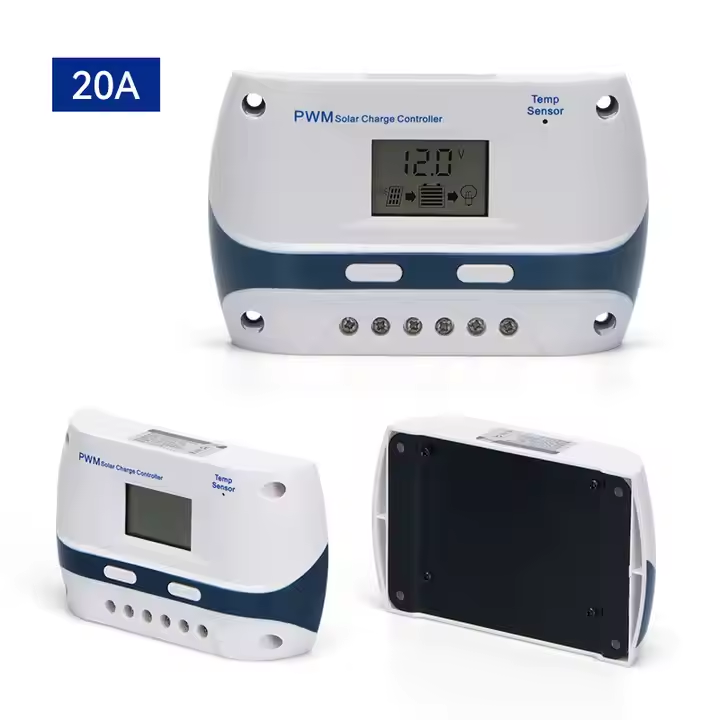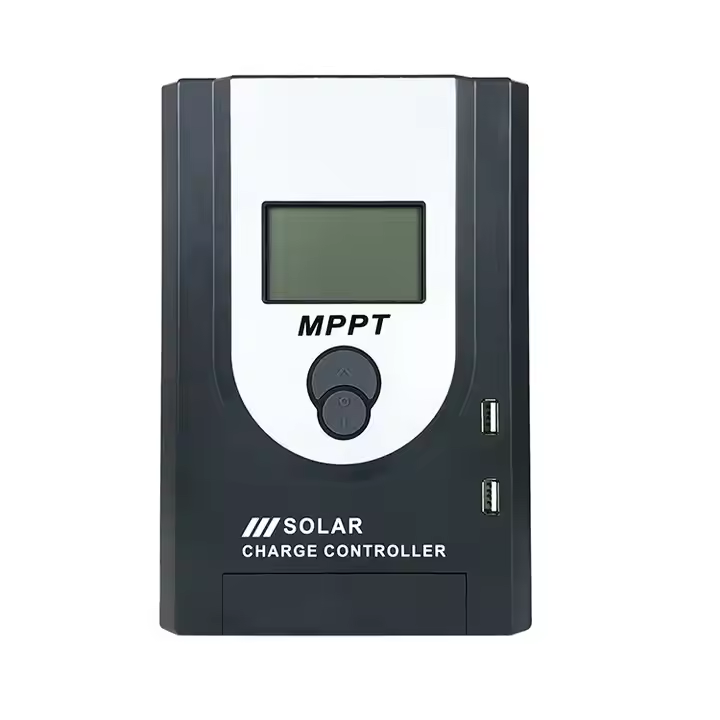I. Introduction
Off-grid solar systems offer an attractive solution for homeowners who seek energy independence, reliability, and cost savings. While many focus on solar panels and battery storage, one crucial component often overlooked is the solar controller. The solar controller is the unsung hero that regulates the power flow from the panels to your batteries, ensuring optimal charging and protecting your investment from damage. In this article, we compare the two primary types of solar controllers—PWM and MPPT—discuss their benefits and drawbacks for off-grid systems, and provide practical advice to help you choose the best option for your home.
II. Understanding Solar Controllers
A. Definition and Core Functions
A solar controller is a device that manages the energy generated by solar panels, directing it appropriately to charge your battery bank while preventing potential issues, such as reverse current flow at night. Its critical roles include:
Regulating Charging: Ensuring batteries are charged within safe voltage and current limits.
Battery Protection: Preventing overcharge and deep discharge, thus prolonging battery lifespan.
Preventing Reverse Current: Disconnecting panels during periods with little or no sunlight to conserve stored energy.
B. Common Features
Modern solar controllers may include features such as built-in displays, remote monitoring via apps, and safety protections (overcharge, over-discharge, and short-circuit protection) that enhance system performance and user experience.
C. Types of Solar Controllers
PWM (Pulse Width Modulation) Controllers:
PWM controllers are straightforward and cost-effective. They reduce current gradually as the battery approaches full charge, making them suitable for smaller off-grid systems with consistent sunlight.MPPT (Maximum Power Point Tracking) Controllers:
MPPT controllers are more advanced and efficient, continuously adjusting to extract the maximum power from your solar panels under varying conditions. They are ideal for larger or complex off-grid setups where maximizing energy yield is critical.
III. Comparing Solar Controllers for Off-Grid Systems
A. PWM Solar Controllers
Operation:
PWM controllers work by simply reducing the charging current as the battery nears full capacity. Their operation is straightforward, which translates to ease of use.Advantages:
Cost-Effective: Generally less expensive, making them attractive for budget-conscious homeowners.
Simplicity: Ideal for small-scale systems with relatively stable sunlight.
Drawbacks:
Lower Efficiency: Especially in situations with variable sunlight, PWM controllers might not extract maximum power from the panels.
B. MPPT Solar Controllers
Operation:
MPPT controllers continuously track the maximum power point of the solar panels, dynamically adjusting the voltage to optimize energy harvest.Advantages:
High Efficiency: Can increase energy capture by up to 30% compared to PWM controllers, particularly beneficial under fluctuating weather conditions.
Better Performance for Larger Systems: Offers superior performance in complex setups where maximizing energy output is essential.
Drawbacks:
Higher Cost: The advanced features and technology come at a higher initial investment.
Increased Complexity: Requires a more sophisticated setup and configuration, which may necessitate professional assistance.
C. Emerging Options
Some innovative controllers attempt to combine the simplicity of PWM with the efficiency of MPPT, offering additional smart features. While still emerging, these hybrid options may further optimize performance and ease future upgrades.
IV. Key Considerations for Off-Grid System Integration
A. System Compatibility and Specifications
Voltage and Current Matching:
Ensure that your solar panels, battery bank, and controller share compatible voltage and current ratings. Mismatches can lead to inefficiencies or potential damage.Capacity Planning:
Evaluate your household’s energy consumption and growth potential to determine the correct system size. Properly sized components guarantee long-term system performance.
B. Communication and Monitoring Features
Integrated Monitoring:
Features such as built-in displays or remote app connectivity provide real-time insights into voltage, current, and system health.Data Logging:
Keeping historical data allows you to identify trends and preemptively tackle potential issues.Smart Connectivity:
Options like Wi-Fi or Bluetooth enhance the ability to control and optimize the system remotely.
C. Configurable Settings
Adjustable Low Voltage Disconnect (LVD):
Fine-tuning LVD settings prevents deep discharge of your batteries, safeguarding your investment.Customizable Charging Parameters:
Ability to adjust charging cycles based on variable energy needs ensures the system always operates at peak efficiency.
D. Environmental Considerations
Operating Temperature Range:
Choose a controller capable of functioning reliably in your local climate—especially in off-grid areas where environmental conditions may be harsh.Ingress Protection (IP) Rating:
A higher IP rating guarantees durability and continuous performance in dusty or humid conditions.
E. Brand Reputation and Support
Warranty and After-Sales Service:
Select products from reputable brands with robust warranty policies and accessible customer service.User Reviews and Certifications:
Positive reviews and industry certifications are indicators of quality and long-term reliability.
V. Best Practices for Controller Selection and Installation
A. Optimizing System Design
Modular Approach:
Use a modular design that allows for future upgrades and easy expansion of your system.Precise Matching:
Accurately determine your energy requirements to select the appropriate size and type of solar controller that best suits your off-grid setup.
B. Installation Procedures
Panel Installation:
Secure your solar panels in the optimal orientation and angle to capture maximum sunlight.Accurate Wiring and Connections:
Ensure all connections between solar panels, the charge controller, battery bank, and any additional components are correct and secure.System Integration:
Carefully integrate the solar controller with your off-grid system, verifying that the battery and other components are properly wired.Testing and Commissioning:
Conduct comprehensive testing to ensure proper operation and adjust settings as needed to fine-tune performance.
C. Regular Maintenance and Troubleshooting
Routine Inspections:
Regular cleaning of panels, checking wiring, and monitoring battery voltage are essential.Troubleshooting:
Develop a structured approach to diagnose common issues such as wiring faults or parameter misconfigurations.Upgrades:
Stay informed about advancements in solar controller technology to consider future upgrades that can further enhance system efficiency.
VI. Case Studies and Real-World Examples
Example 1: Residential Off-Grid Installation
In one high-temperature residential off-grid installation, integrating an MPPT solar controller significantly increased energy harvest by 20%. The system achieved a stable AC output despite fluctuating sunlight, extending battery life and reducing overall energy losses.
Example 2: Community Off-Grid Project
A community project in a remote area implemented a PWM controller that was cost-effective for their modest energy needs. Despite lower efficiency, the system was reliable and simple to maintain, proving that the best choice depends on specific project requirements.
Lessons Learned
Successful projects underscore the importance of accurate system matching, robust monitoring, and regular maintenance. Avoid pitfalls such as using undersized components or improper configuration to maximize energy output and system longevity.
VII. Conclusion
Choosing the right solar controller is critical for any off-grid solar system. Whether opting for a straightforward PWM controller or a more sophisticated MPPT model, the key is to match the technology to your system’s specific needs. By considering compatibility, monitoring capabilities, adjustable settings, and environmental conditions, you can optimize your off-grid solar system for maximum efficiency and reliability. With the right planning and professional guidance, you can secure a sustainable, cost-effective, and energy-independent future for your home.
VIII. Frequently Asked Questions (FAQs)
What are the main differences between PWM and MPPT controllers?
MPPT controllers optimize energy output under variable sunlight conditions, offering higher efficiency than PWM controllers, which are more suitable for simpler, small-scale systems.How do I determine the appropriate solar controller size for my off-grid system?
Evaluate your solar panel output, battery capacity, and overall energy consumption. Ensure that the controller’s voltage and current ratings meet or exceed these requirements.What maintenance practices will ensure long-term performance of my solar controller?
Regularly clean the solar panels, check all wiring connections, monitor battery voltage, and periodically calibrate settings such as Low Voltage Disconnect.How does smart connectivity benefit an off-grid solar system?
Smart connectivity enables real-time monitoring and remote control, allowing you to track system performance, identify issues promptly, and optimize energy management.
Final Note
By carefully evaluating your energy needs and understanding the differences between PWM and MPPT solar controllers, you can select a device that ensures your off-grid solar system performs optimally. Expert system design, precise installation, and regular maintenance are essential to maximizing efficiency and achieving long-term benefits from your renewable energy investment.




